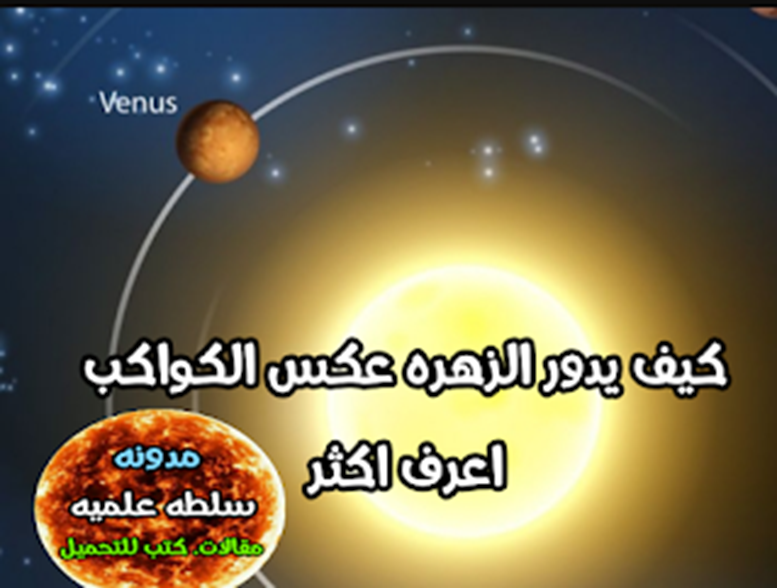?How does Venus rotate against the planets
The rotation of Venus around itself is different from the rest of the planets; It is the slowest planet in terms of rotation speed, as the planet rotates clockwise, and Uranus is the only planet that rotates like it from east to west. Unlike other planets that are elliptical in shape.
The rotation of Venus around itself
Venus rotates around itself counterclockwise, as it differs from the rest of the planets in rotation and in the rate of time, and this results in several reasons as follows:
The direction of rotation of Venus
Venus revolves around itself from east to west unlike other planets, but it is believed that the planet was revolving in the same direction as the other planets. This difference is due to several explanations, one of which is that the planet collided with a fast meteor in ancient times; Which led to a change in its course and the direction of its previous rotation. On the other hand, scientists explained the change in its course and direction because of its very slowness. Which also explains its current slowdown.
The period of the planet's rotation around itself
It takes Venus in the process of revolving around itself for 243 Earth days, in addition, one day in Venus is longer than a full year in it, as it requires a full hour to travel 6 and a half kilometers, while the planet needs one hour to travel 1600 km, and the night lasts On Venus it is about 117 days, while on Earth the night lasts only 12 hours.
?Why does Venus rotate around itself
The rotation of the planet around itself has many benefits
including:
The importance of knowing the rate of Venus' rotation around itself lies in determining the take-off and landing times of spacecraft a period of time, specifically a decade before the operation, in addition to determining the landing sites.
The night on Venus lasts 117 Earth days, so the sun does not rise and set on a daily basis as it does on most planets, and this is due to the planet's rotation in the opposite direction of its orbit around the sun.
The rotation of Venus around the sun
Venus has a circular orbit around the sun, unlike other planets that revolve in its elliptical orbit. This has several reasons and features as follows:
?How does the planet Venus rotate
Venus revolves around the sun differently from the rest of the planets, as the planets rotate in an elliptical orbit, while Venus rotates in a circular manner and its orbit does not deviate from 3 degrees, and therefore the temperatures on the planet do not change significantly during the year; This causes a lack of diversity in the atmospheric seasons, and the length of the planet's orbit around the sun is 107 million kilometers; Which is approximately 0.00677 AU.
The period of time for the rotation of the flower
Venus takes about 224.65 Earth days to revolve around the sun in its circular orbit, which is naturally equivalent to a year in the planet Venus, and from this we conclude that the day on Venus is longer than the year on it and that the sun does not rise and sets except twice a year. A year on Venus is equal to 0.615 (61.5%) of a year on Earth, in addition to the fact that it takes the planet an hour to travel 126,077 kilometers in its orbit around the Sun at a moderate speed.
?Why does Venus revolve around the sun
The rotation of the planet around itself is important and for several reasons
including:
The temperature on the surface of the planet changes slightly as a result of its rotation around the sun in a circular motion with a deviation of no more than 3 degrees; Therefore, the planet lacks the succession of seasons, so the temperature remains almost the same throughout the year, unlike planet Earth, for example, the seasons are alternate and differentiated.
Venus is also called the morning or evening star, because of its position in the solar system and its rotation.
Other facts about the rotation of Venus
Here are some facts about the planet Venus:
Venus is covered by heavy clouds. When the planet revolves around the sun and slowly rotates itself at the same time, the upper part of these clouds is removed within 4 Earth days, due to winds equivalent to the strength of a hurricane, which travels and cuts 360 kilometers within an hour.
The magnetic field of Venus is much weaker than that of the Earth, despite the similarity in size and the size of the iron core, and this is due to the slow movement of its rotation around itself.
Venus receives less sunlight than Earth, although Venus' orbit is closer to the Sun than Earth's, all because of the thick clouds that surround Venus.
source:websites


